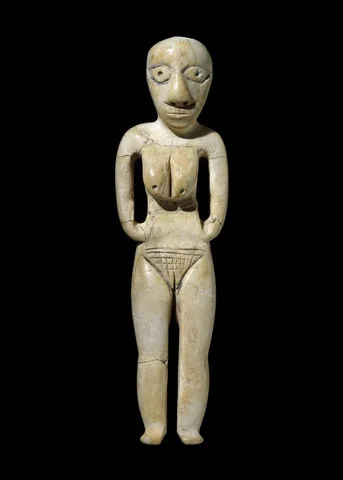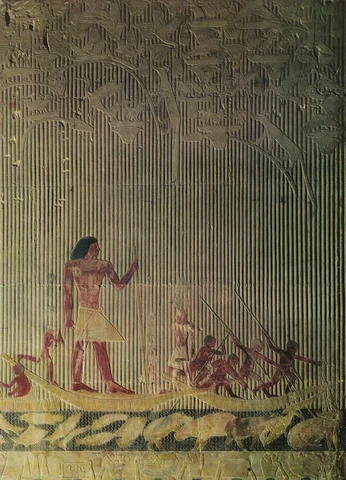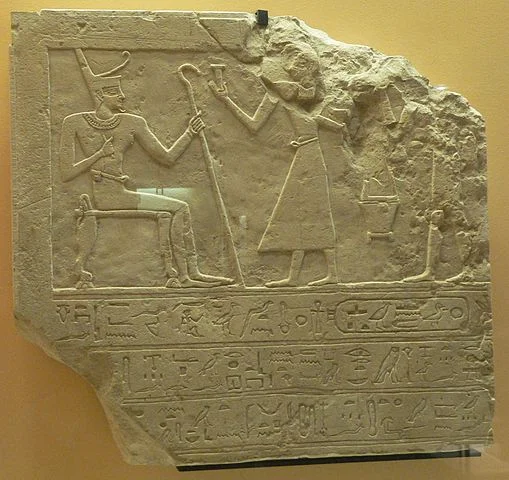-
 This figurine was located from a grave at Badari, it was excavated in the 1920's and is one of the oldest human-shaped statuettes to be known from Egypt. The eyes and the nose seem to be extremely large, the arms are separated from the body and seems to be rejoined to the hips. The Badarian culture is the earliest of the Upper Egyptian cultures, and was the last to be identified.
This figurine was located from a grave at Badari, it was excavated in the 1920's and is one of the oldest human-shaped statuettes to be known from Egypt. The eyes and the nose seem to be extremely large, the arms are separated from the body and seems to be rejoined to the hips. The Badarian culture is the earliest of the Upper Egyptian cultures, and was the last to be identified. -
-
 This is one of the most oldest Figurines that the Museum's had. This statuette was excavated in 1907, it was located in a tomb at the site of EI Ma’marîya in southern Egypt, The woman's face in the figurine seems to have a distinctive face and her emphasized nose accentuates the importance of breath. Her chest looks bare, and her arms are raised over her head, her hands are pointed inward to her head.
This is one of the most oldest Figurines that the Museum's had. This statuette was excavated in 1907, it was located in a tomb at the site of EI Ma’marîya in southern Egypt, The woman's face in the figurine seems to have a distinctive face and her emphasized nose accentuates the importance of breath. Her chest looks bare, and her arms are raised over her head, her hands are pointed inward to her head. -
 In the Old Kingdom, this painting shows Ti watching over the hippopotamus hunt, which you can see in the painting showing Ti's men hunting, they were hunting for hippos, lions where known as those beasts that were full of power, which felt the same when they were hunting for Hippos, in the water you can see Hippos, fish and a crocodile.
In the Old Kingdom, this painting shows Ti watching over the hippopotamus hunt, which you can see in the painting showing Ti's men hunting, they were hunting for hippos, lions where known as those beasts that were full of power, which felt the same when they were hunting for Hippos, in the water you can see Hippos, fish and a crocodile. -
 In the Middle Kingdom Senusret III (also written as Senwosret III) had ruled from 1878-1839 B.C.E. and was the fifth monarch of the Twelfth Dynasty of the Middle Kingdom. he had his military campaigns that had gave him a rise to an era of peace and economic prosperity that doesn't only reduce the power of regional rulers, but also led to a revival in craftwork, trade, and urban development in the Egyptian kingdom.
In the Middle Kingdom Senusret III (also written as Senwosret III) had ruled from 1878-1839 B.C.E. and was the fifth monarch of the Twelfth Dynasty of the Middle Kingdom. he had his military campaigns that had gave him a rise to an era of peace and economic prosperity that doesn't only reduce the power of regional rulers, but also led to a revival in craftwork, trade, and urban development in the Egyptian kingdom.
